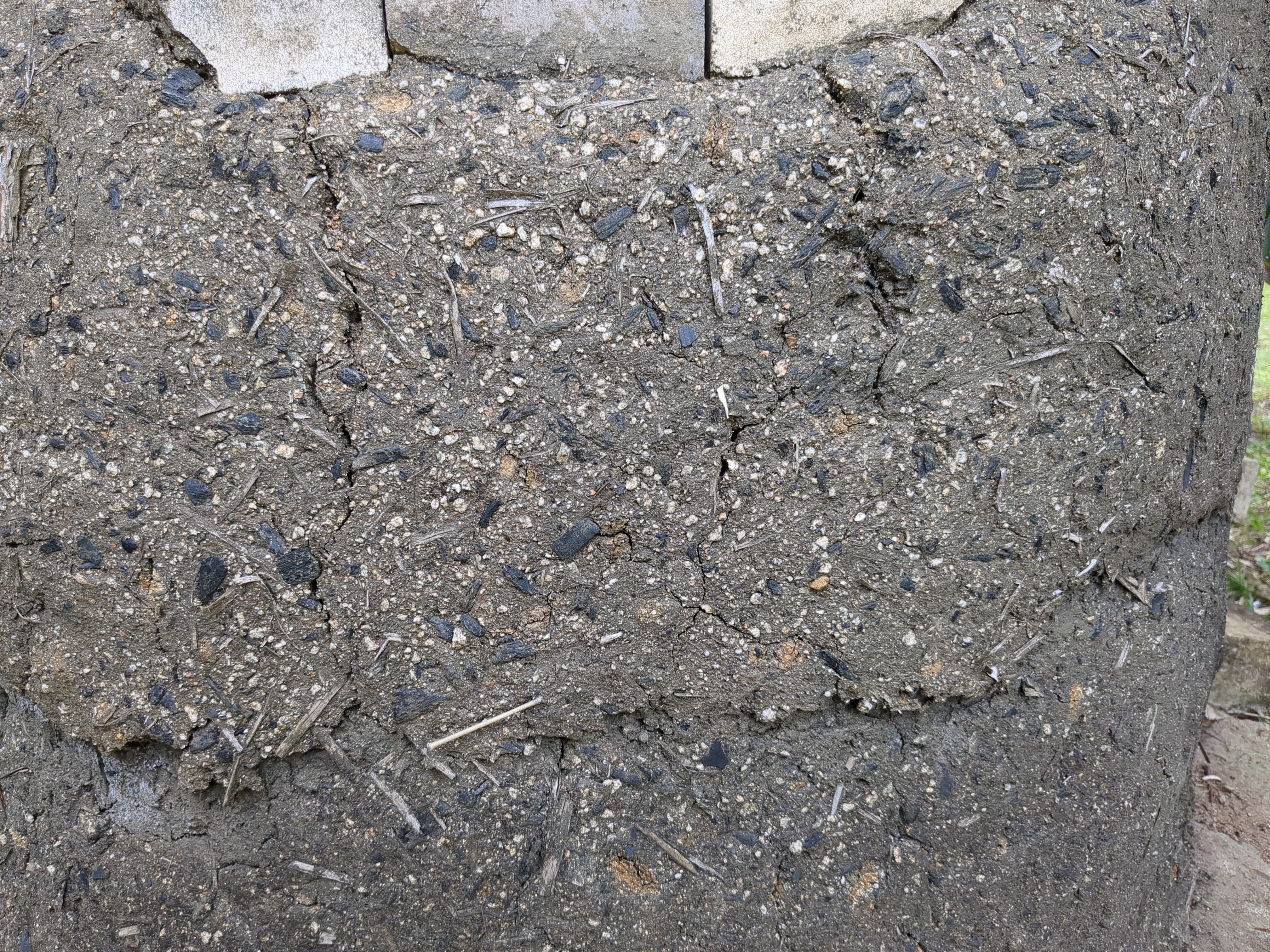This is one of my favourite overview videos of Vetiver Grass, Chrysopogon zizanioides; a sterile plant with a myriad of uses that grows in areas with humid/wet Summers (or a water phytoremediation plant in hot, dry areas). Mainly used as erosion control on heavily degraded lands in full sun as a pioneer to native revegetation.
This video used to be hosted on Vimeo but has been reuploaded to YouTube, hence the lack of views.
If you have any questions on how Vetiver works, ask away. Happy to answer all of them.
Attention Gardeners. Vetiver Grass can be invasive depending on your location.
Prefer native species if you live outside of its natural habitat (eg India, Indonesia, …), or make sure you buy a non-fertile/sterile Vetiver variety.
(Edit: add link for sterile variety, rephrase to sound less frightening)
The most commonly used commercial genotypes of vetiver are sterile, and because vetiver propagates itself by small offsets instead of underground stolons, these genotypes are noninvasive and can easily be controlled by cultivation of the soil at the boundary of the hedge. However, care must be taken, because fertile genotypes of vetiver have become invasive.[10]
[10] “‘SUNSHINE’ VETIVERGRASS Chrysopogon zizanioides (L.) Roberty” (PDF). National Resource Conservation Service. Archived from the original (PDF) on October 25, 2017. Retrieved March 3, 2018.
Extract of Chrysopogon zizanioides on Wikipedia.
Common being the operative word. You have to order in seeds for it to be fertile, no certified nurseryperson would recommend or be selling seeds. One would have to actively do no research and make several critical mistakes, maybe even illegal mistakes, for Vetiver to become invasive.
As I said, ask any questions. Vetiver, as it is known in the bioengineering sense, is sterile. Vetiver, as the wild plant of India, has fertile genotypes. They aren’t really related even though they are a similar plant.
Fear, uncertainty, doubt. Unnecessary in this case. Nativists are always the same.
Vetiver is great to plant in areas where it’s native. It’s probably fine elsewhere as long as it’s non-fertile. Thanks for highlighting the Sunshine Vetiver variety btw.
My intention is to add this caveat to avoid mistakes, not frighten people. Planting/importing invasive species became illegal because people made mistakes. And it still happen from time to time. Customs may not catch every plants that’s ordered online and come from overseas.
Also I want to encourage people to plant a variety of native plants. A single species may not grow well everywhere. Ask your local nursery about native, deep rooted plants. In the US there’s the NWF Native Plant Finder.
I strongly disagree. There is no plant for the humid sub/tropics that physiologically is better than ‘Sunshine’ or ‘Monto’. One can’t be concerned with climate change, wholesale land degradation, and extreme weather events and then think that local plants are adapted or adapting to all of these conditions. Literal climate zones in the US have changed in our lifetime.
I’m going to sound like a twat here but I have over 20 years horticultural experience, am currently working in the invasive plant industry now specialising in the worst of the worst invasive plants in our area, formerly working on large scale landslip remediation and regeneration, run a native plant nursery specialising in native erosion plants in my spare time, run a charity for Vetiver Grass uptake, do regeneration in my own time (just completed a 3000 plant riparian project all grown from seed), etc etc. I have a lot of experience in this field, like a stupid amount. I feel 100% confident that your concerns are unfounded. And that doesn’t consider the nonprofit that runs the research and dissemination of Vetiver in over 100 countries for the last 40 years. What you have commented hasn’t cracked the case and I doubt it won’t cause them to close up.
I won’t be able to argue with Wikipedia as an unrelated source (unrelated in that what you are quoting is completely unrelated with the video) or change your mind unfortunately. I just hope that readers understand that Vetiver is a tool, a tool that helps native plants grow in the long-term, its not stealing space from them. The world is changing and changing rapidly, we need to adapt with it. If the doubt in your post prevents one person from using Vetiver when it could have had a measurable impact and improve ecological outcomes faster than a few native plants, then that’s a tragedy.
Not sure we disagree that much, I mentioned earlier Vertiver sounds great in area where it’s native (ie tropical countries). A humid subtropical climate can be found in many places and I trust that it grows well there.
However most countries do not have such climate. I assumed, possibly wrongly, Vetiver wouldn’t grow as well elsewhere given the wide range or temperature and humidity found in different places.
I may be over-cautious with non-native species, in Europe we’re plagued with a few ones like insasive hornets attacking bees, silurus in waterways, box tree moth attacking my family’s garden, …
To better understand, are you saying Vetiver would be a good fit in most climates (except deserts), let say Mediterranean and Subtropical highlands? Or where you speaking in the context of tropical areas only?
Edit: It appears I was underestimating Vetiver. According to Paul Truong it grow even in mediteranean climate, and while it doesn’t like cold they can survive a bit of cold weather.
It grows where it grows. It’s not native to the tropics, it and its related species grow endemically in a couple of countries. One cultivar has spread from there as a “tool” for bioengineering purposes, water treatment etc., because of how unique it is.
It grows in Florida, Texas, California and others. It grows on tropical islands. It grows throughout the tropics and subtropics of Australia. It grows in New Zealand. Africa. Asia. I’m trying to find correspondence from a University Professor in the States that grew it for phytoremediation and then brought it all in before it froze, for some reason i think Minnesota but I can’t find any hits. It is in Spain, Italy, the warmer locales - https://vetiverspain.com/
I may be over-cautious with non-native species, in Europe we’re plagued with a few ones like insasive hornets attacking bees, silurus in waterways, box tree moth attacking my family’s garden
That’s fine when you are bringing in plants of an unknown nature. There are figuratively massive bodies of work regarding Vetiver Grass, peer reviewed, that should allay your fears. 40 years of modern study, hedges that are 100 years old on an island as a real world example. How you feel about random plants and animals doesn’t relate to Vetiver. You have to believe in the science, not the vibe of it. I’d say Australia is far more delicate than Europe; we are leading the way in extinctions, land clearing, and have some of the strictest plant and animal quarantine controls in the world. Vetiver is openly grown here with no issues.
I’m writing this for other readers as well, you don’t really think of Vetiver as a plant in a garden. It’s a tool in your toolbox for specific reasons, like a drain or a swale or silt control or a septic tank or retaining walls. A garden should have native and noninvasive exotic food producing plants, Vetiver sits outside of gardening as a technique. If a native plant can do the job required, use it but don’t discount a sterile bioengineering tool when there is real work to be done that native/endemic plants can’t do well. It’s self-defeating.
We have grown these as part of our traditional medicine stuff for a long time. These plants are pretty awesome :) Glad to see them catching on in the wider world.
Are you distilling from the roots yourself? At scale or small?
In our traditional medicine there’s no distilling as far as I know. The root is ground up to form stuff. The roots are also dried out and woven into mats for people to sleep on but that’s quite expensive. I remember us having a small rug made of this as a child.
Thank you. Do you mind, if it’s not too forward, defining “your traditional medicine” so I can look up some info to expand my knowledge?
I live in an area where it’s difficult to retrieve roots (soil type) so I use the tops only, plus we have no culture around things like that. I’ve used the tops for brick-making but I understand the roots are a superior addition for cob. The picture is an oven render that has shortcut grass in it.

Sure, it’s called Ayurveda, traditional Indian medicine. It’s part of my culture but I don’t really use any of it because I feel most of it has no scientific basis and no scientific exploration has been done in the present to identify why it might work or what active components are. It saddens me when people eschew lifesaving medicine for this stuff.
That looks really cool :) I can confirm that the roots are tough as fuck. They have extremely high tensile strength. If you dry them out and make something out of that fiber it will be extremely nice and smell really cool!
On a side note if you take a small bit of roots+leaves together from the main plant and plant it separately, that can grow into another plant. We usually just pick one plant and split it into ten or so pieces all of which are planted again.
https://www.planetayurveda.com/library/ushira-vetiveria-zizanioides/
Copy. Here’s a link for anyone reading and what a list of cures! From a fragrant oil to all of that. I was familiar but was hoping how you use the root without distillation was something clearer.
I once separated a large plant and broke it into 144 separate slips without counting crown pieces!
I didn’t want to recommend something that I hadn’t tried myself :)
This is something my grandmother used to make that is quite delicious: https://spicykitchen.net/recipe/khus-syrup-ramacham-sarbath/
It’s all good. Thank you for that.
Having soaked Vetiver slips for a decade now, I can break that recipe down in terms I understand. A hint of oil in sugar water.
Did you like it? Is it something you would seek out?
OT but I found that some elements of Ayurvedic meal preparation to be quite helpful and aligned with recent research around SIBO (small intestine bacteria overgrowth) and helping with restoring function of the migrating motor complex. (The West calls this ‘mindful eating’; I also started preparing a lot of Jain style recipes.) As with many non-Western traditions, often the grounding in research is either independently discovered or never attributed. I wish I knew of some ‘bug bounty’ like program where people could ask for the studies they wish to have done directly.
I think the problem in a sense is that what the west recieves is a very watered down version.
The ground reality is often unfortunately different. I know 5ish people who tried to heal cancer with ayurveda and died, low 20ish of those who tried to cure diabetes with ayurveda and died from complications and the list goes on. Had to take my grandfather to the ICU because of side effects from one of the ayurvedic medicines interacting with some cardiac meds he was prescribed.
Ayurveda like other traditional medicine is basically a compilation of trial and error herbal recipies whose efficacy have not been tested. Some of it works, most of it probably doesn’t. People here treat it as real medicine and some kind of faith healing which is frankly kind of sickening.
Recently there has been a movement by the fundamental part of the political spectrum to get ayurveda practitioners to be certified be real doctors and even perform surgeries. These people believe humors cause diseases and have less knowledge of biology and physiology than highschooler.
Sorry for the rant :( It just makes me sad sometimes. I’m sure there are useful bits in ayurveda like you’ve found.
@Parsnip8904 Absolutely - I used a mixture of western medicine (which is great for acute problems) and I took inspiration from Ayurveda for lifestyle changes that helped. There are people who misuse alternative medicines all around, and it is not great I agree. That’s why I went to a doctor who had actually gone to medical school, *and* was familiar with additional alternative therapies that are finally getting some of the studies you and I both want them to have. Unfortunately such practitioners appear to be rare.





